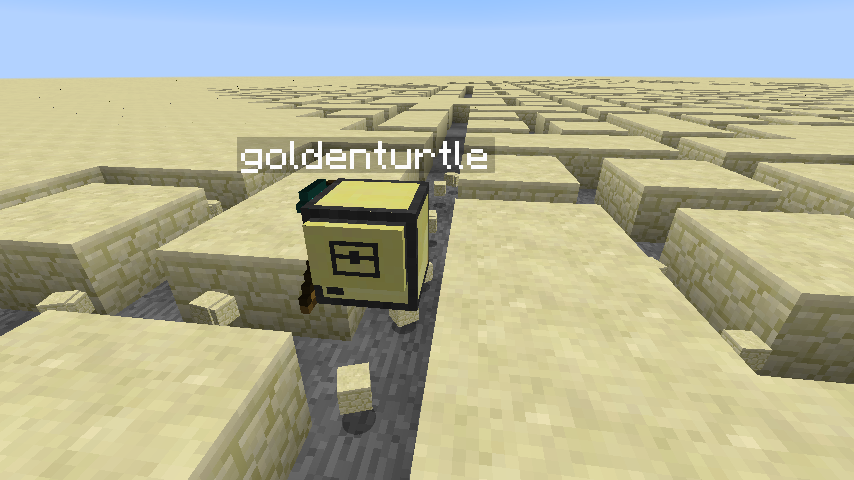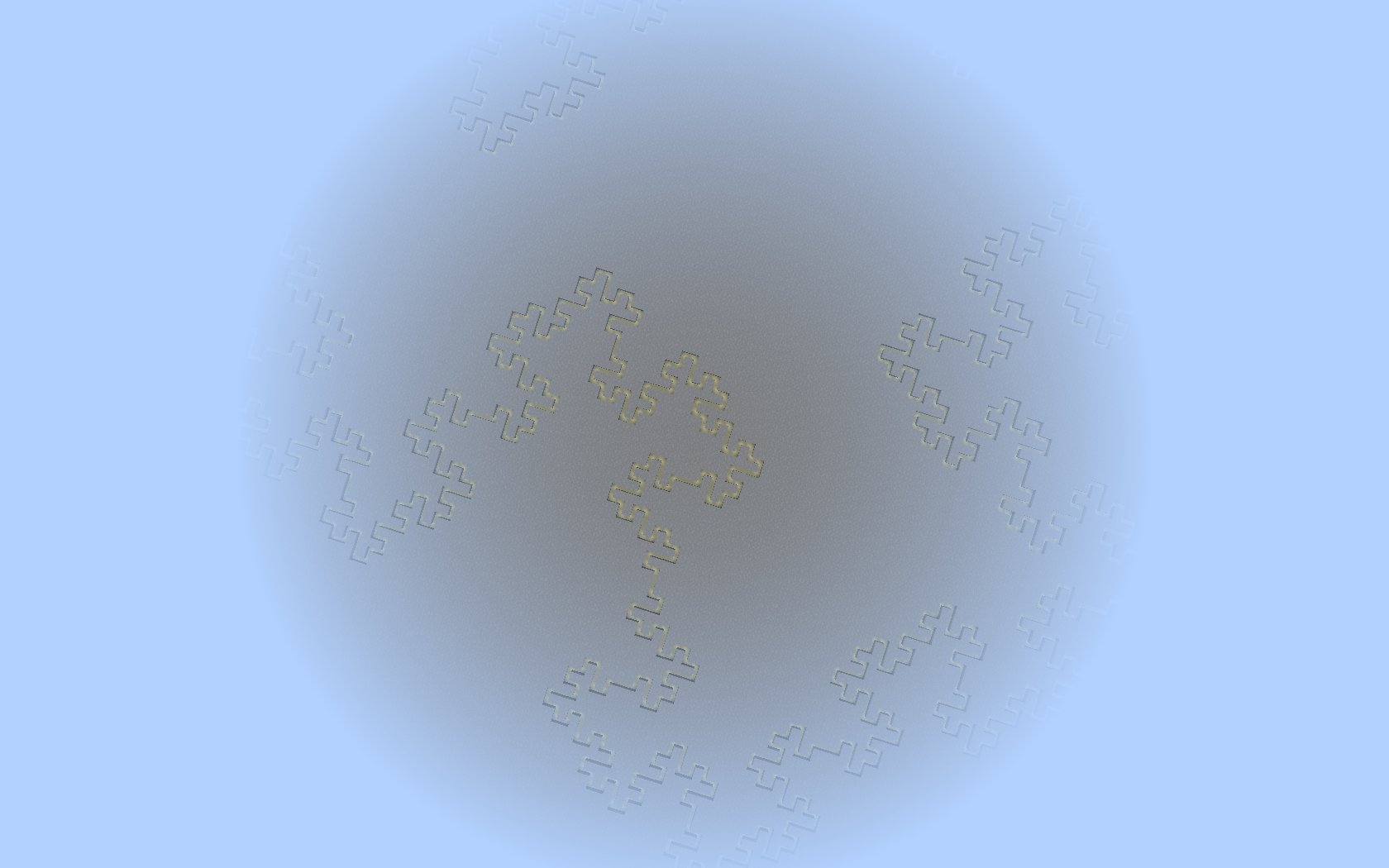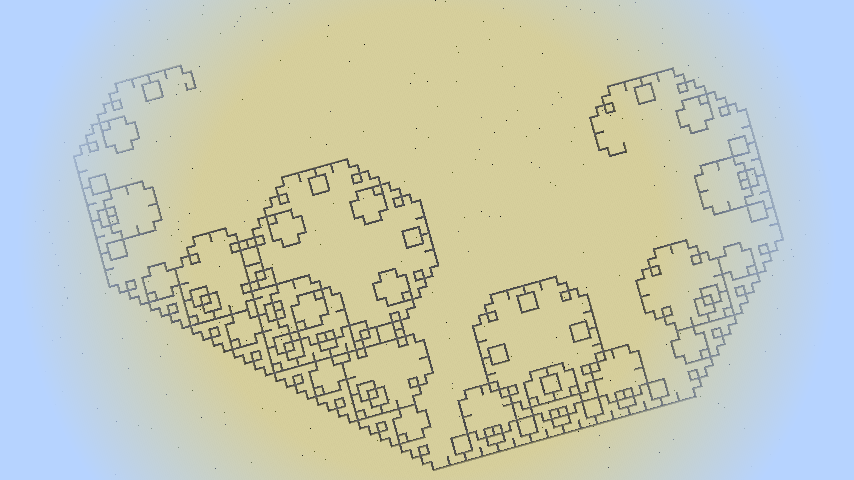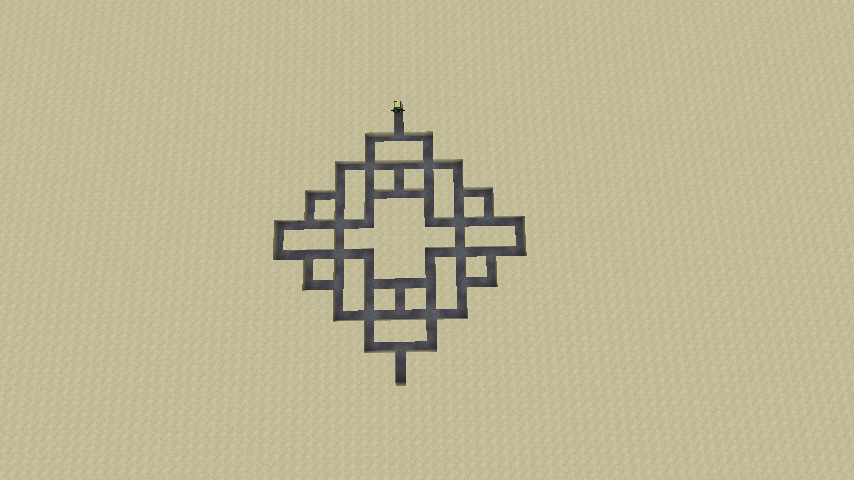Crafting Fractals
Why is geometry often described as “cold” and “dry?” One reason lies in its inability to describe the shape of a cloud, a mountain, a coastline, or a tree. Clouds are not spheres, mountains are not cones, coastlines are not circles, and bark is not smooth, nor does lightning travel in a straight line.
— Benoît B. Mandelbrot, The Fractal Geometry of Nature

This post is out of nostalgy and because I am since my first fractal an incurable mandelbrotian. Here you can hear about how I couldn’t dig Sierpinsky’s triangle using turtles and how fun and slow is to dig fractals on your own world. I haven’t done this in survival mode cause I am a total beginner of Minecraft and all those creatures spawning near my turtle terrify me too much.
Back in the days when I studied Logo and I played with fractals things were easier than in Minecraft because I could rotate the head of my turtle to whatever angle I wanted whereas here I can only turn 90 degrees. This constraint can of course be tackled but the waiting time is already too long without aproximating every curve to a staircase.
I tried out Lua for the first time not while working on the neural models that I should work on but in the console given by my turtle using ComputerCraft.
The first fractal I tried was the Koch Island which is at its first level a square. It fits minecraft pretty well. I think it’s a nice maze with which you can fill your world…

My second try was the cross fractal, which didn’t actually work. Its first level was a square without a side but the 2nd level was a nice cross.
Third: Levy which looks a
lot like a plant. L3viathan helped me a
bit there with my function, after I stared at it for 20’, not understanding why
I attempt to call nil. Here are some shots of this beautiful maze dug in
sandstone.

And the fourth fractal today is Squarepinsky! Since rotating by 60 degrees is not that easy I switched to Sierpinsky’s carpet which is a square divided in 9 identical squares but of smaller dimensions out of which a bigger one is in the center of the initial square. All the small squares are again divided and so on. These self-similar creatures have interesting properties.

I stop here for now cause my turtle doesn’t move as fast as I wish.
You can look at the lua scripts for the fractals here.
